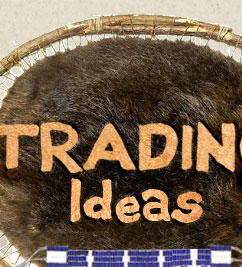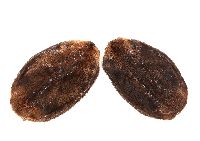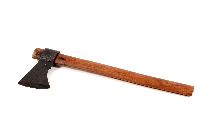Home > Europeans Arrive > Trading Things - Europeans Arrive
Trading Things
The first contacts between the First Nations of Canada and Europeans most often led to trade. After several weeks at sea, what could the Europeans need? Imagine a ship where there was no refrigerator. This made it impossible to bring food that spoiled easily. Most meals consisted of ship's biscuits, also called hardtack. They weren't very appetizing, and eating them every meal didn't improve the taste. On arriving in Canada, when hunters presented themselves at their camp, the Europeans were delighted to trade items from their country for fresh meat. However, these trading activities were not always preceded by the usual protocol, because they did not take place at trade gatherings.
Over the years, the European fishermen got into the habit of bringing trade items along with their fishing equipment. The sailors earned a little extra money selling the furs that they brought back from North America. This activity took on increasing importance, so much so that, by the end of the 16th century, there were ships that made the voyage uniquely to trade with the First Nations.
The items that the Europeans brought attracted the interest of the First Nations from the start. Some of these objects were improved versions of things that the First Nations made, while others had never been seen in North America. In general, the items obtained from the Europeans were appreciated because they made the daily tasks of the First Nations easier. With a metal axe, for instance, it took much less time and effort to make a dwelling, a canoe or a pair of snowshoes.
For their part, the Europeans had two reasons for wanting North American furs. The first was that northern Europe, which usually supplied furs, was not accessible. The second was that merchants found Canadian furs to be of much better quality than European furs. In short, Europeans no longer had access to the furs they previously bought, but they had discovered better ones that were readily available!
This is all fine and good, but one thing has to be made clear. In any trade between Europeans and the First Nations, the value of an object depended on who was trading it. For a European a metal axe was an ordinary item, but a beaver pelt was very valuable because it was rare. For the First Nations it was the metal axe that was rare, and very useful. For them a beaver pelt was worth less than an axe. The Europeans were sure that they were getting the better of the deal by trading for furs. The members of the First Nations, for their part, thought that you had to be crazy to trade metal tools for simple beaver pelts.









